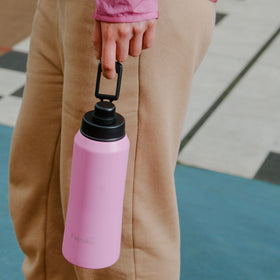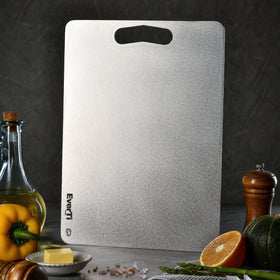
How to Make Sure You're Really Buying Organic
For the same reasons that you would feed your baby organic foods, parents are recognising the importance of organic baby skincare and other organic products for baby.
Babies are far more vulnerable than adults, not just because the skin (our body's largest organ) is 10 times thinner than an adult's, but also because, relative to their size, their food and air intake is much larger than an adult’s.
Although chemicals may be approved for use in ‘safe’ quantities, this doesn’t take into account the sheer volume of exposure across the multitude of products that we use every day. Nor does it take into account how easily the complex balance of bacteria and chemical compounds that make up our bodies can be disrupted – the effects of which may not be apparent for years to come.
Using organic products should mean that you reduce your exposure to toxins and harmful chemicals. But how do you know that what you’re buying is really organic?

What to look for: organic, green, natural, pure?
The word ‘organic’ itself is not actually regulated in Australia. Nor are green, earthy colours on labels and words like ‘pure’ and ‘natural skincare’. These are tricks used by sneaky marketing people to make you think that you're buying organic, when you may not be.
It’s easy to be misled by organic-looking packaging – especially when you’re sleep deprived and rushing around doing the shopping with a baby. But there are independent organic certifying bodies that make it easier to be a mindful consumer when it comes to organic baby skin care and other organic products. Here’s what to really look for on the packaging:
Australian Certified Organic (ACO)
The first is the Australian Certified Organic label, and it's one of the first labels to look for when you're buying organic. The ACO ensures compliance to some of the highest organic standards worldwide.
ACO certifies everything from butchers and restaurants, to cosmetics and skincare, food ingredients, textiles, pet foods, farms, and even abbatoirs. When you see the ACO logo, you know that it’s produced to the highest organic standards in the world.
When it comes to organic textiles, this can be a challenging, time consuming and costly process, which is why you will rarely see “certified organic” in clothing but will more frequently see “made with organic cotton/wool”. This is because to be certified organic, every single process from the way that the animal is reared through to spinning, yarning, dyeing and manufacturing are all required to be certified organic in order to bear the label. Dyeing the garment is often where many manufacturers fall over due to consumer expectation of the quality and stability of the dyes. So often, 100% Australian Certified Organic textiles in babywear are produced by small scale manufacturers and if a product has been imported from overseas bearing an international organic certification, the ACO will assess these standards against their own before giving certification.
Organic Food Chain (OFC)
The Organic Food Chain is another label to look for when you're buying organic. The OFC is a leading Australian Organic Certification body certifying to the National Standard for Organic and Biodynamic produce for primary producers, food and skincare processors, distributors and wholesalers. The OFC was founded by farmers who were looking into methods to reduce their chemical usage following years of poor yields, quality loss and high debt, recognising the improvement in soil fertility, animal health and better returns.
National Association for Sustainable Agriculture (NASAA)
The National Association for Sustainable Agriculture in Australia (NASAA) is the third label you need to look for when you're buying organic, to guarantee Australia’s high standards of organic certification. Any of these three labels on the front of product packaging will usually indicate that the product contains 95% organic ingredients with the remaining 5% naturally sourced. Logos on the back of packaging generally indicates that the product contains 75% organic ingredients or materials.
Another label you may see often is Ecocert – though Ecocert were one of the first regulatory bodies to develop certification around organic standards in Europe, Australia’s organic certification bodies are far more stringent. It's still a good indicator of organic and natural cosmetics.










